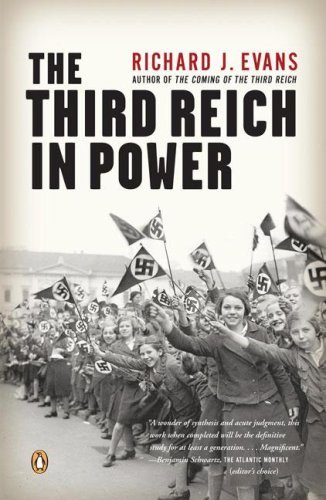What do you think?
Rate this book


988 pages, Kindle Edition
First published October 20, 2005
Fans of William Shirer's classic Rise and Fall of the Third Reich might be disappointed by Cambridge historian Richard J. Evans's ongoing history of Nazi power. This second volume is not a gripping yarn of Hitler's cult of personality but an evenhanded, intensively researched, synthesized history. That said, it's no stuffy academic tome; the New York Times Book Review dubs Evans an "Heir to a British tradition of dons who write engagingly for a broad public." A few reviewers take aesthetic umbrage at the author's use of English words for well-known German terms like F